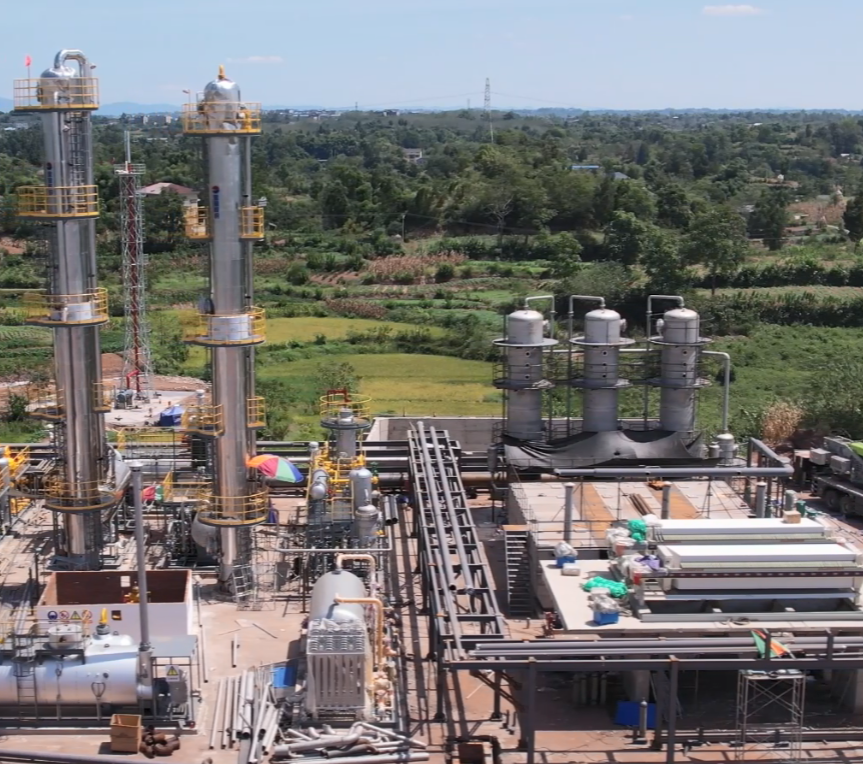There are many ways to configure various unit processes for processing natural gas or treating natural gas plant. The following is a general and typical configuration of natural gas for non-associated gas wells. It shows how the untreated natural gas is processed into natural gas for sale which is transported to the end user market through pipelines.Natural gas liquid (NGL): propane, butane and C5+(this is a common term for pentane plus high molecular weight hydrocarbon). The original natural gas is usually collected from a group of adjacent wells and first processed in the separator container at the collection point to remove free liquid water (remove water from natural gas )and natural gas condensate. Condensate water is usually sent to the refinery, and the water is treated and treated as waste water.
Then, the feed gas is transported to the gas treatment plant through the pipeline, where the initial purification is usually to remove acid gases (hydrogen sulfide and carbon dioxide).Due to a series of performance and environmental limitations of the amine process, newer technologies based on the use of polymer membranes to separate carbon dioxide and hydrogen sulfide from natural gas streams have gained more and more acceptance. The membrane is attractive because it does not consume reagents.Acid gas (if any) is removed by membrane or amine treatment, and then sent to sulfur recovery unit, which converts hydrogen sulfide in acid gas into elemental sulfur or sulfuric acid. Among the processes that can be used for these conversions, Claus process is by far the most widely known process for recovering elemental sulfur, while traditional contact process and WSA (wet sulfuric acid process) are the most commonly used technologies for recovering sulfuric acid. A small amount of acid gas can be treated by combustion.
The residual gas from Claus process is usually called tail gas, and then the gas is treated in the tail gas treatment unit to recover the residual sulfur compound and recycle it back to Claus unit. Similarly, there are many processes that can be used to treat the tail gas of Claus unit. For this reason, WSA process is also very suitable because it can conduct self-heating treatment on the tail gas.
The next step of the gas treatment plant is to use the renewable absorption in liquid triethylene glycol (TEG), commonly known as ethylene glycol dehydration, deliquescent chloride desiccant, or pressure swing adsorption (PSA) device using solid adsorbent for renewable adsorption to remove water vapor from the gas. Other relatively new processes, such as membrane separation, can also be considered.
Mercury is then removed using an adsorption process such as activated carbon or renewable molecular sieve.
Although not common, sometimes one of three processes is used to remove and reject nitrogen:
- The low-temperature process (nitrogen removal device) uses low-temperature distillation. If necessary, the process can be modified to recover helium.
- In the absorption process, lean oil or special solvent is used as absorbent.
- The adsorption process uses activated carbon or molecular sieve as adsorbent. The applicability of this method may be limited because it is said to cause the loss of butane and heavier hydrocarbons.
Contact us:
Sichuan Rongteng Automation Equipment Co., Ltd.
www. rtgastreat.com
E-mail: sales01@rtgastreat.com
Phone/whatsapp: +86 138 8076 0589
Post time: Mar-17-2024



